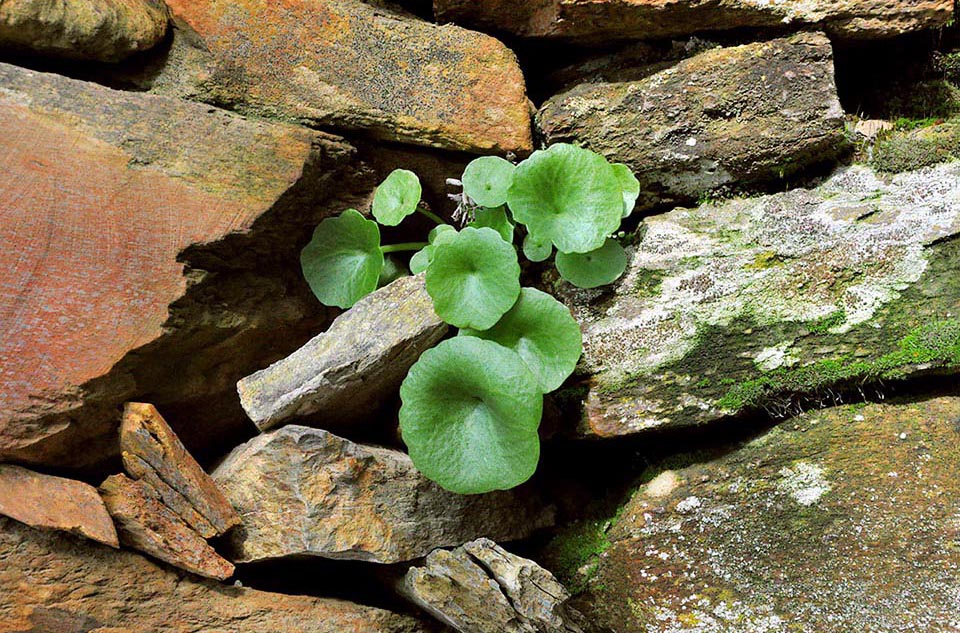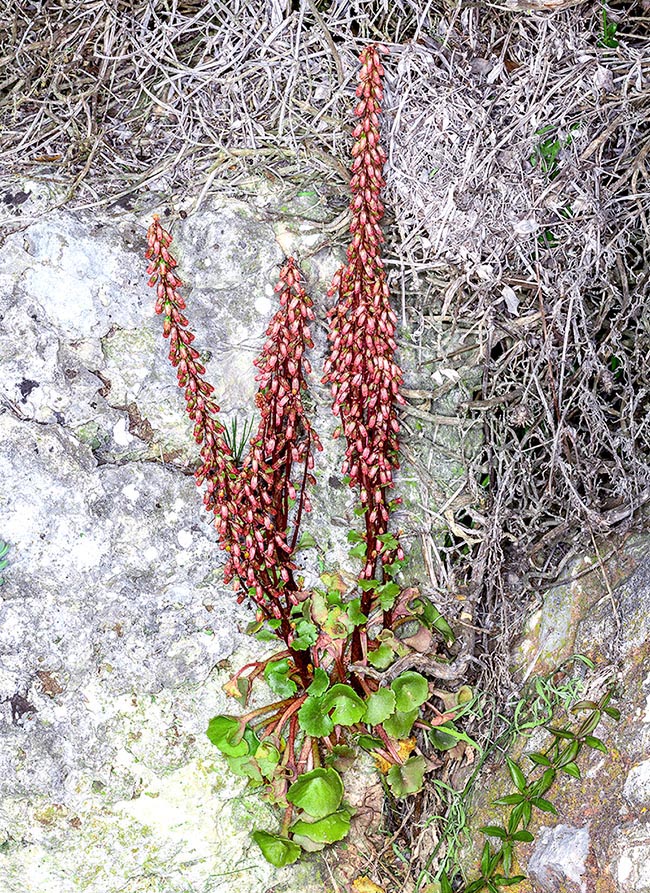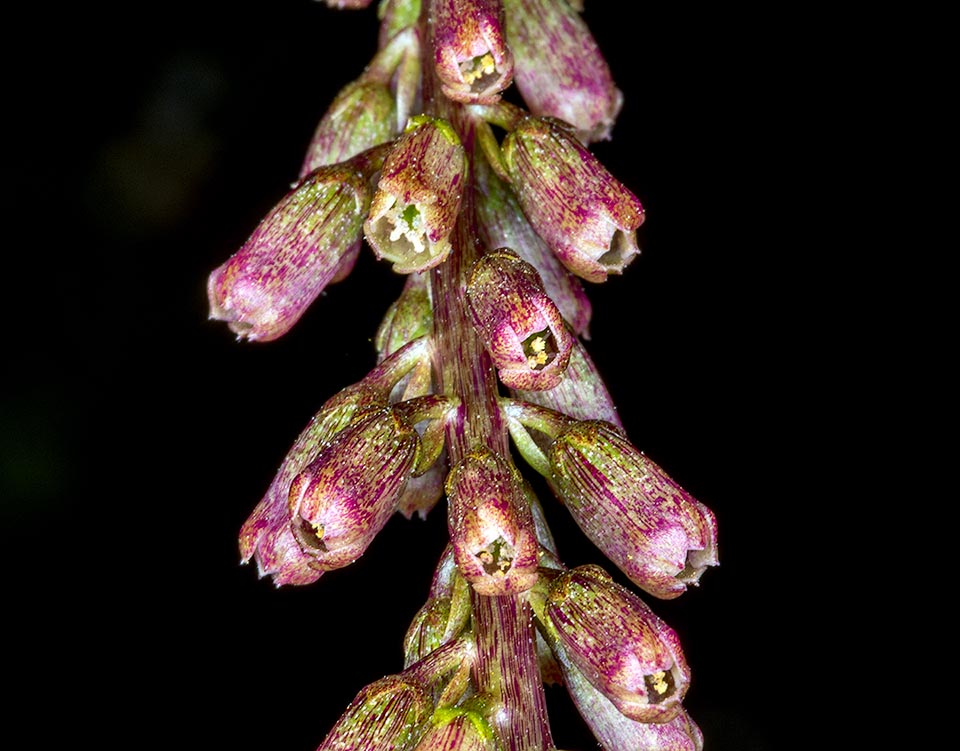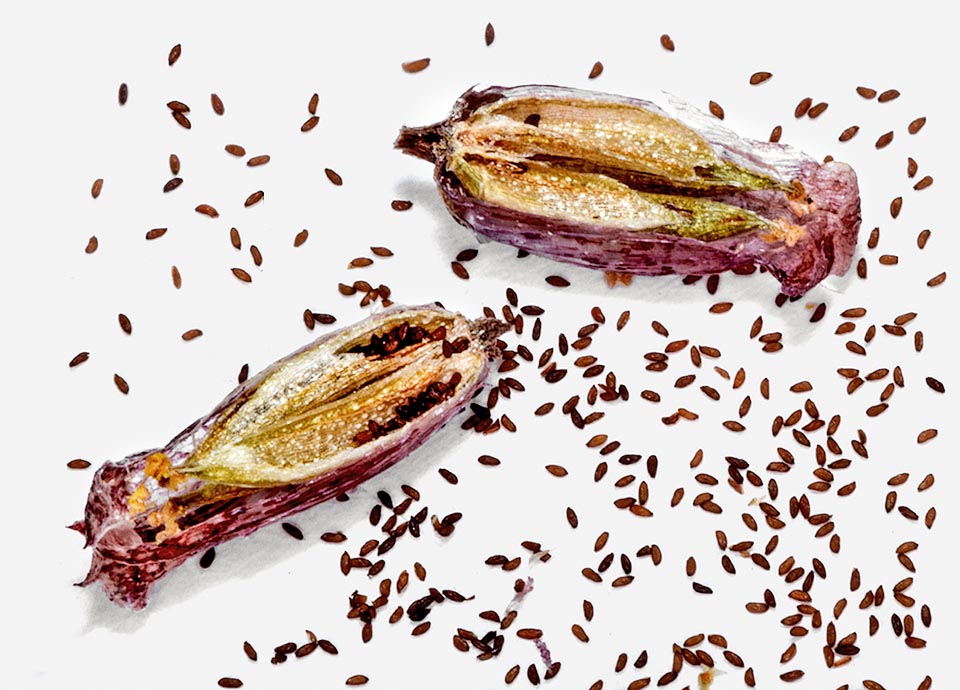Family : Crassulaceae

Text © Prof. Pietro Pavone

English translation by Mario Beltramini

The Venus’ navel (Umbilicus rupestris) is a geophyte frequent on shady rocks and stone walls in the Mediterranean area up to more than 1200 m of altitude © Ana Raimund
Umbilicus rupestris (Salisb.) Dandy is a species of the family Crassulaceae included in the order of the Saxifragales.
It is found in Açores, Albania, Algeria, Balearic Islands, Bulgaria, Corsica, Crete, Cyprus, France, Great Britain, Greece, India, Ireland, Italy, Lebanon-Syria, Libya, Madeira, Morocco, Portugal, Saudi Arabia, Sinai, Spain, Tunisia, Turkey, Yugoslavia. It is a tuberous geophyte succulent and mainly grows in the temperate biome on shady and humid rocks, on old walls, in environments with stony/gravelly soils, up to 1200 (2000) m above the sea level.
Initially it was called Cotyledon rupestris by Ricardo Antonio Salisbury (1761-1829) in Prodr. Strip. Chap. Allerton: 307 (1796), but it’s due to James Edgar Dandy (1903-1976) to assign it the name presently accepted in Fl. Gloucestershire 611 (1948). The generic epithet comes from the Latin “umbilicus”, navel, with reference to the depression located at the centre of the leaves. The specific epithet, “rupestris” comes from the Latin “rupes”, cliff, crag, referring to the places where it grows.

20-50 cm tall, has tuberous rhizome. The erect, glabrous stem, produces flowers on more than half its length © Giuseppe Mazza
Its common name is Venus’ navel, Navelwort.
It is a 20 to 50 cm tall plant, with tuberous rhizome and erect stem, glabrous, producing flowers over more than half its length.
The leaves are fleshy, the basal ones with circular lamina, peltate (diameter of 2-5 cm), crenate and with a long petiole (4-20 cm).
Those on the stem progressively reduce to lanceolate-shaped scales.
The slightly pendulous flowers are grouped in one racemose inflorescence usually linear, 25 or more cm tall, often unilateral.
The flower peduncles are 3-9 mm long, shorter than the bracts. The calyx has 5 sepals merged at the base and free on top. The corolla is tubular-campanulate with five 1,5-2 mm teeth, greenish-yellow at times somewhat reddish, 7-10 mm long.
The redness may interest the whole inflorescence and sometimes even the leaves. The stamens are 10 merged to the corolline tube and the gynoecium is formed by 5 free carpels.
The oldest plants can produce several floral stems. The blooming occurs between (March) April and July (August).
The fruit is a polyfollicle or follicetum, that is an aggregate of follicles, usually formed by 5 follicles, 5-7 mm, with numerous seeds (0,5-0,7 mm), ovoid or elliptical, of dark brown colour.
Due to the limited availability of soil in its habitats, it may be exposed to intermittent periods of drought that cause it water stress.
In this case Umbilicus rupestris has the ability to pass through C3 type photosynthesis to the acid metabolism of the Crassulaceae, adaptation that is found in a vast range of succulent plants. This type of metabolism allows the plant to keep the stomata closed during the day and open them during the night, thus reducing the loss of water under the form of vapour.
Yore, this species was utilized, together with other wild grasses, for human consumption, in particular in the filling of savory pies, but also raw, in salad, because of the meaty and crunchy consistency of its leaves.
The leaves are to be consumed when still young, because if mature, are bitter and have an unpleasant taste.
In some populations of the Mediterranean area this species was utilized, in the traditional medicine, against the skin inflammation and irritation, to treat boils, as wounds disinfectant and to treat burns. The use included the direct application of the leaves as a poultice or shredded with addition of cream or fat, as an ointment.

Inflorescence enlarged detail. The tubular-campanulate corollas are 7-10 mm long. The leaves, when collected young, are edible and have medicinal virtues © G. Mazza
Also the infusion prepared with the leaves was utilized due to its diuretic properties and as ophthalmic disinfectant.
A recent study (Food Chemistry, Vol. 295, 341-349, 2019) has highlighted the nutritional composition of the leaves of Umbilicus rupestris, indicating that this plant may be included in the human diet able to provide nutrients and bioactive compounds, such as omega 3 fatty acids, organic acids, tocopherols (vitamin E) and phenolic compounds, mainly flavonoids.
The healing from ulcer and the gastroprotective activity of the methanolic extracts of leaves of Umbilicus rupestris was tested in the gastric lesions caused by the ethanol in the rats – Glob J Res Rev. 4:1 (2017). This healing is due to the numerous secondary metabolites present in the leaves such as: flavonoids, saponins and tannins. In particular, the flavonoids are antioxidant and strong kidnappers of the free radicals who prevent ulcerations and the cellular oxidative lesions.
These studies confirm the medicinal properties the populations traditionally gave to this plant.

The fruit is a whole of follicles, usually 5, with numerous small ovoid or elliptical seeds, of dark brown colour of 0,5-0,7 mm © Giuseppe Mazza
Synonyms: Cotyledon rupestris Salisb.; Cotyledon gredense Pau; Cotyledon neglecta Cout. ; Cotyledon ombilicus Lam.; Cotyledon pendulina (DC.) Vierh.; Cotyledon tuberosa Halácsy; Cotyledon umbilicata Lam.; Cotyledon umbilicifolia Stokes; Cotyledon umbilicus-veneris L. ; Cotyledon umbilicus-veneris var. deflexa (Pomel) Maire; Cotyledon umbilicus-veneris var. gredense (Pau) Pau; Cotyledon umbilicus-veneris var. marianica Pau; Cotyledon umbilicus-veneris var. patula (Pomel) Maire; Cotyledon umbilicus-veneris subsp. pendulina (DC.) H.Lindb.; Cotyledon umbilicus-veneris var. pendulina (DC.) Batt.; Cotyledon umbilicus-veneris subsp. pendulina (DC.) Batt.; Cotyledon umbilicus-veneris var. tuberosa L.; Cotyliphyllum erectum Link; Cotyliphyllum umbilicus Link; Umbilicus aetneus Tornab.; Umbilicus deflexus Pomel; Umbilicus neglectus (Cout.) Rothm. & P.Silva; Umbilicus patulus Pomel; Umbilicus pendulinus DC.; Umbilicus pendulinus var. punctatus Gray; Umbilicus pendulinus var. truncatus Wolley-Dod; Umbilicus pendulinus var. velenovskyi Röhl. ex Jacobs; Umbilicus rupestris var. truncatus (Wolley-Dod) Rowley; Umbilicus rupestris var. velenovskyi (Röhl. ex Jacobs) Rowley; Umbilicus simplex K.Koch; Umbilicus umbilicatus (Lam.) Breistr.; Umbilicus vulgaris Batt. & Trab.; Umbilicus vulgaris subsp. pendulinus (DC.) Batt. & Trab.
